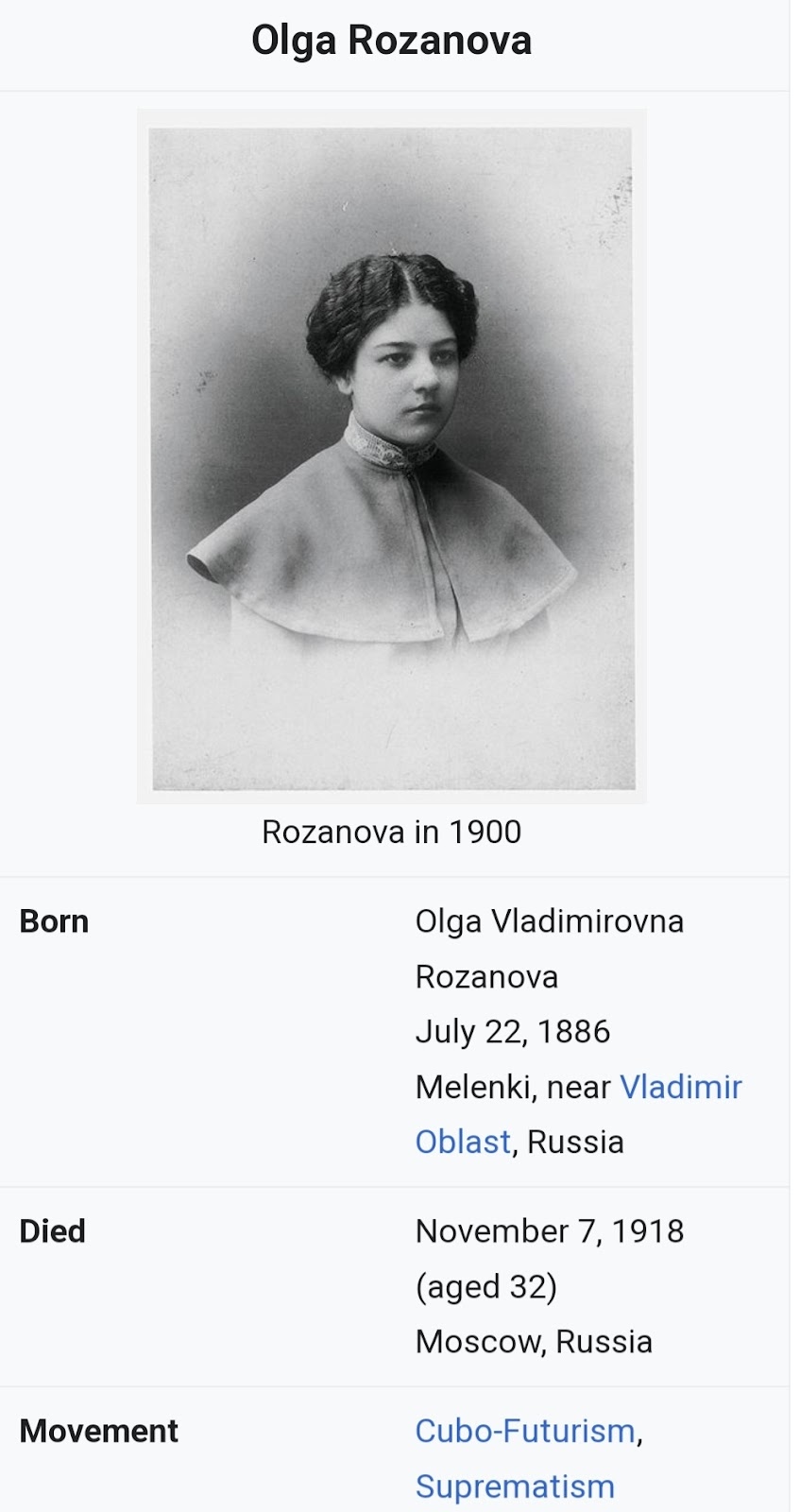Politics and Identity
We are all formed by our environments and our experiences to one degree or another.
What I want to talk about through my work, what I am motivated to explore through my creativity, is inevitably informed by my life journey thus far. And in that way, this will continue to shift and evolve as I do. As my context and my relationships do.
These things don't have to drive my making or what other artists make. We don't all have to make autobiographical work.
But I find approaching making through this way enormously helpful. It means that I'm talking about things that I feel passionate about, that I have personal insight of and am motivated to explore and reconcile my emotions and attitudes about.
A Russian female artist who explored politics and identity in their work is Olga Rozanova. She made gorgeous abstract art under Lenin which was informed by here communist setting.
"Collage-based works such as Non-Objective Composition were the precursor to Rozanova's later painterly abstractions. Indeed, she felt that such works, with their elementary, overlapping shapes, and textural play with translucency and opacity, were the inspiration for Kazimir Malevich's turn towards "non-objective" abstraction with his first Suprematist canvases of 1915.
Rozanova's collage-work anticipates her later Suprematist work in its incorporation of simple, non-representational shapes such as arcs and rectangles. But the compositional technique also points to international sources: like much of the work of her French Cubist and Italian Futurist predecessors, Rozanova's collage-work blurs the boundaries between painting as a two-dimensional illusion and painting as a non-representational, three-dimensional surface (potentially incorporating found and 'non-artistic' material). What was different about Rozanova's collage work was the aesthetic logic behind that maneuver. Whereas Picasso's use of found materials in his Synthetic Cubist collages collapsed the boundaries between high and low art, and the incorporation of printed text into Italian Futurist collage-work often signaled an overtly political agenda, Rozanova was more interested in the abstracted color harmonies which could be emphasized once painterly representation had been done away with. The new shapes and tonalities created by the overlapping of surfaces represent an exercise in the interplay of unmodulated color planes, a form of practice-based research into the interaction of color.
Non-Objective Composition is thus a vital work both in pointing towards the Malevich-esque abstractions of Rozanova's final years, and in his revealing her own, central and under-acknowledged role in shifting Russian avant-garde art towards the aesthetic stance of Suprematism."
(Source: https://www.theartstory.org/artist/rozanova-olga/)
Another artist Tom referenced during this lecture who appealed to me was Gottfried Helnwien, a German artist who explores ideas around collective/ national trauma, guilt and healing.
https://www.helnwein.com/






